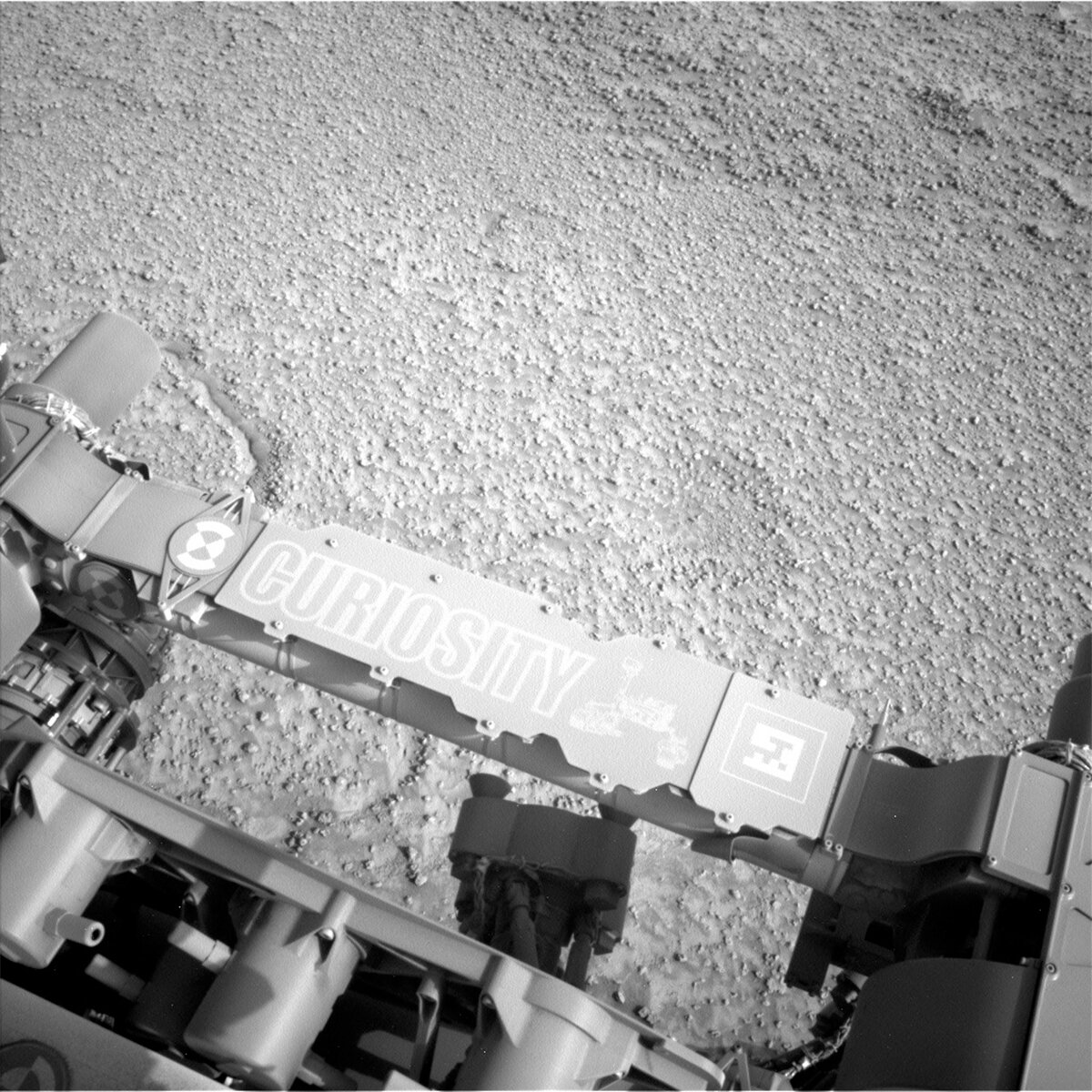3 min read

The drive in our last plan took us to an area that appeared somewhat smoother and brighter from orbit (as well as from drive direction imaging) on the so-called “Marker band” that we have been investigating. The Marker band was identified as of interest prior to Curiosity landing within Gale crater owing to its distinct texture and appearance from orbit within the layers of rock that make up Mount Sharp. What does this interesting feature represent? Might it be a layer of volcanic ash? How does its chemistry, mineralogy, texture and colour differ from the surrounding Mount Sharp rock layers? These are all questions we are trying to address as we continue to traverse the Marker band, which is why we drove to our current workspace. However, when we looked at the images this morning, it was clear that our parking spot was far from smooth, at least on the cm-scale, and the brightness can probably be attributed to the ubiquitous dust and soil present (see the image associated with this blog). Our workspace was sprinkled with small (1-3 cm size), resistant pebbles that may or may not be attached to underlying rock, which is obscured by the dust and soil that has collected between the pebbles. Our plan was to get “contact” science of the rock in this workspace, but because of the size and nature of the pebbles, it was not safe to place the APXS in contact with what the rover engineers referred to as, “APXS-killers!” The pebbles were the perfect size and spacing that they could have poked up into the APXS instrument, so we chose instead to hover over the pebbles (the target, “Alasca”) with APXS to determine their composition. We will also take close-up MAHLI images of “Alasca,” as well as of an interesting trough-like feature (“Alegria”). As the APXS strategic planner today, I chose the target and liaised with the rover engineers to make sure that our instrument will be safely deployed. To further characterize this workspace, ChemCam will fire the laser at the resistant pebble “Viudita” to determine composition, and we will acquire an accompanying Mastcam documentation image.
Further afield, we planned imaging of the terrain around and ahead of us with both Mastcam and ChemCam RMI. These images include continued characterization of the grey float rocks that are scattered on the surface; documenting the stratigraphy in the direction that we plan to drive in; looking for more examples of the rhythmic layering that we saw exposed within the Marker band when we first investigated it; and imaging apparent changes in the surface texture of the Marker band.
After executing all our targeted science, we plan to drive away, ~12 m to the SSW, to put some of the grey float rocks in our workspace for the weekend. Once the drive has completed, there is lots of untargeted science still to be done. A MARDI image will document the terrain below us, and an untargeted ChemCam AEGIS activity will give us a glimpse of the composition of our new workspace. The rest of the untargeted science will predominantly comprise observations (Mastcam and Navcam) to monitor the atmosphere and sky, including Mastcam imaging of Phobos, Mastcam twilight imaging and a Navcam twilight movie. Standard REMS, DAN and RAD activities round out this plan.
Written by Lucy Thompson, Planetary Geologist at University of New Brunswick







